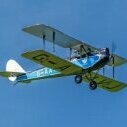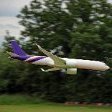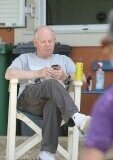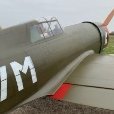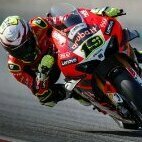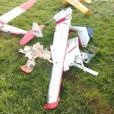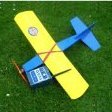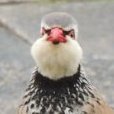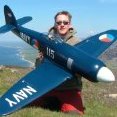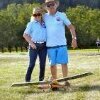Leaderboard
Popular Content
Showing content with the highest reputation on 25/01/23 in all areas
-
Really calm today so the Depron Seagull had another test. The downward faxing thrust tube coupled with a vary slight right thrust component has transformed it flight characteristics Still a bit sluggish in roll but it can now fly hands off for many seconds. Very sensitive in pitch but it can easily perform a tight loop! The only outstanding issue is it is using a 'park fly' Rx with a single very short aerial. Get the plane lined up wrong with the Tx and it looses signal and it takes a full 3 seconds to re acquire it.😲 A new Rx is the next task. Now confident enough in its flight characteristics to make flight video. The really calm weather seems to have moved on so it is currently "hanging on the wall".4 points
-
1935 Documentary about the RAF tonight at 19:05 - see the 'copy & paste' below. I can't recall seeing this before. You can watch Talking Pictures TV on Virgin 445, Freesat 306, Freeview or Youview 82 or on the Sky digital satellite platform, channel 328. Wed 25 Jan 19:05 R.A.F. 1935. Documentary. Directed by John Betts. Commentator: Squadron Leader W. Helmore. Documentary about the Royal Air Force featuring training of new recruits and aircraft of the period. [S]2 points
-
I use an old DX9 which is DSM2 compatible with several models, updated to the latest firmware versions as they are issued. The DX9 still works happily with my old DSM2 receivers. The "unusable model" issue is an old one, fixed some years ago by Spektrum. The fixes and other benefits of the latest firmware are valuable - I suggest you'll have no problems updating. Steve.2 points
-
Having been mixing various epoxies over the last 60+ years, it has become apparent that mixing the EXACT quantities is not overly crucial. . . Yes, you want to be as close as possible but there is some leeway to the percentages. Basically, don't drive yourself mad being pedantic about measuring to the last gram.2 points
-
Well what I used previously did work very well as the Freddie Mix I was informed by the PSS guys that i should use lightweight filler instead of the Micro Balloons. Good news is that lightweight fillers is substantially cheaper. See photo for ingredients. I've now applied the Freddie Mix to the bottom wing surface and also a photo of the Sabre tailplane which once sanded is as smooth as a baby's bum.2 points
-
AoA is measured by taking the angle between the relative airflow and the chordline of the wing. Moving the aileron changes the chordline and as a result AoA changes as well. This is why an aileron moving down with the wing at its critical AoA will provoke a stall as it pushes the wing beyond its critical AoA. All that said, a deflected control surface will not be as efficient at preventing tipstall as the whole wing being twisted for the reason you mention.2 points
-
I'm helping run a STEM (science, technology, engineering and maths) expo for school children in both primary and secondary schools in my neighbourhood. We have plenty of tabletop displays but the hotel balloom has a very high ceiling and it seems such a shame to waste all that space. 😉 I have some window winder motor gearbox units that run at 30 RPM and I thought it would be nice to mount these on top of poles and have some simple models swinging around - see the simple sketch. I have the system working just using a washer on the end of a string and it has potential. Could someone post a sketch of a simple aircraft - preferrably made of flat card or similar. I have a laser cutter so I can do complex 2D designs but that also means that I could do inner structures for the wings and put a good profile on it. I'd accept any tips on where to attach the string and adding a little weight if required. What would be a good "string" to use to minimise wrapping around the pole or general tanglement? Many thanks.1 point
-
This is literally exactly what I wanted to hear lol, I think I know we're I'd use it but feel afraid I'm missing something through inexperience. Thanks1 point
-
1 point
-
Thought I'd stick a picture up just for fun, not much as time is pretty hard to come by and I've had to commandeer the dining room table whe nI can. No glue on the frame as the sundeala board has decided being straight isn't it's thing..1 point
-
You can see what the O-Four9ier E is about here and even download the plan, but buying the magaine is a better way to get a fullsize plan. You want the RCME February issue which came out last Friday.1 point
-
My thought is that todays youngsters would want something they could control by RC and so an electric plane running round the pole with it's own motor and inbuilt battery with simple RC would be better than something swung around by a pole mounted motor.1 point
-
My Volantex Spitfire bound to my tx16s was difficult to fly without stabilization. Until I put some nose weight in the form of 3x5p in the battery compartment. Flies great now.1 point
-
Can not see any benefit for this type of aircraft doing what you suggest. The model is a bag of drag with all those flying/landing wires, are they just for show/rules ? Another thing may be to experiment with different props on your TT54 and fine the best for the job.1 point
-
First of all get a copy of this months RCME and look at the free pull out O-Four9ier E plan - could be a plane to suit you or just to see how balsa building is done by studying the plan. This design is simple to build and uses little balsa but spans 56 inches ( it's easier too see a medium size plane than a tiny thing especially if older ) and the latest one is for electric but could be built as the original for an .49 glow. As all the regular forum members know the designer - Peter Miller - is on this forum most days to advise people who are building from his plans. You cannot get better than that! If you are an experienced model pilot then a design like Ohmen might suit as a first balsa build. Again lots of info on this forum to help you. Then look through all the simpler designs on Outerzone to see if any suit , - I said simpler because a completed simple design is more use than a half built scale design. Consider the Barnstormer 52 or 63 rather than the Corben Baby Ace for that reason.1 point
-
As the cold weather negates any chance of spraying primer in my unheated stone shed, I have been hacking on with surface prep and fiddly details. The cowl has a total of 13 latches and although simple in their appearance attempting to gain some realism has been surprisingly tiresome. Ideally some from of 3d printed part could perhaps have made the task both more accurate and faster. As I don’t have either the equipment or necessary skills for such wizardry its been old fashion fettling of bit and bobs. The four piano type hinges had previously been added and blended in with car body filler. For the cowl latches I cut and drilled them from thin alloy sheet and epoxied them in place. As they should be flush I built around the edges with 3M cellulose putty and sanded back. The flat head slotted screws were the smallest brass screws available from my local independent diy/hardware store with the dome sanded of on a disc sander. The cowl panel lines are deeper and wider due to the fact they are openings with inside ledges so two layers of insulating tape were cut and used building ip with the putty again. Only the front circle, not moulded on the cowl, has a single layer of tape and will just have the primer paint to accentuate it. side bottom top Its looks a bit scruffy at this stage, but fingers crossed once the primer goes down the detail should come to life.1 point
-
Servo's are mounted in the wing and the leads pulled out. Aileron horns are mounted. I usually make the connections between the two (for the ailerons) by cutting 2mm carbon rod and glueing this with epoxy in the clevises. I prefer ball links, mostly because they do not add any slack. I addition here there is no good alignment due to the tapered wing. Ball links absorb minor misalignments gracefully.1 point
-
If you've flown before how about this........https://www.dbsportandscale.com/corben-baby-ace-6512-p.asp Not an absolute beginners model in terms of building but nothing that would be too daunting if you'd be prepared to do a bit of research. You'll then wind up with a model that looks like a real aeroplane (my favourite type) and won't be tricky to fly.1 point
-
Only my opinion, but as Laser only sell 100 or 155 in there current range that and the manual specifies a 120 then a 155 if new. As you have a 150 sitting on the shelf then that sounds the best bet. The FW190 is quite short in the nose then the additional weight of a 150 compared with a 120 (if you could get one) I suspect won't make a lot of difference. The challenge might be installing the engine inverted and achieving the correct carb to tank height, as there are a couple of options. Install the engine off inverted/even horizontal if necessary or measure up and chop/beef up some wood work to get the tank the right height. The 180 will just make the tank positioning more difficult as its a taller engine and is over powering a 6Kg model IMO1 point
-
My Volantex Corsair arrived an hour ago, just the thing to beat up Leccys 109.1 point
-
1 point
-
Agreed - we're having fantastic fun with the wee 400mm Volantex/Sonik/Eachine fighters which are incredibly stable in beginner mode, but virtually unflyable in expert mode, as I illustrated yesterday when I inadvertently launched the Bf109 with the mode switch fully forward, resulting in a very exciting 15 seconds lurching about the sky before hitting the ground, with no damage whatsoever, due to that light weight. 😄1 point
-
Sounds like a BB Electric Junior 60 would be worth considering, or a Super 60 but you'd have to do the electric conversion.1 point
-
If the models John Tee is referring to are the 400mm ws ones then they seem almost impossible to fly with the gyro turned off as in so-called expert mode. I've seen a few YouTube videos of reviews by experienced RC pilots and they usually crash (with minimal damage) seconds after switching to expert mode. I have a T28 which needs lots of rudder to keep it in close enough to see properly in intermediate mode. I also have a Spitfire which is a bit better but they both need rudder as well as aileron to turn tightly enough. Considering their size and weight (<50gm ready to fly) it's amazing they fly at all.1 point
-
The 1/8 square stringers are to give shape to the covering. They are installed on each side per the dashed lines. If you look under the windows you will see the stringer indicated full and then continues as dashed line. A picture from great planes Cub plan is attached showing the section where you can notice the stringer on each side. Hope that helps Cub Stringers.pdf1 point
-
Chordline moves with control surface deflection as shown in the diagram i posted, its just a fact im afraid. You also get a change in camber, drag, and a bunch of other stuff not relevant to this conversation. If i still had my aerodynamics notes from uni i would share them, but i ditched them years ago. When doing spin training in gliders i could induce a stall/spin using ailerons as the downgoing aileron would stall the wing. We practiced this as a stall/spin accident is most likely in the base/final turn and its pretty fatal normally so knowing the warning signs is helpful. Raising the aileron will reduce the AoA of the tip. How useful/effective it is is another story. Washout is definitely going to be more effective but without that option, i would give it a go. However, i suspect the root cause of this Lancaster's stalling problem is not the wings but the engines. It has 4 of them, covering probably 60-70% of the wing area in nice high speed prop wash. Only the outer wings are dealing with relative airflow at the airspeed of the model. As a result they will stall first when loaded as the high speed airflow from the props reduces relative AoA on that part of the wing. Yes there are complicated factors regarding the corkscrew shaped nature of the slipstream, but in simple terms it will prevent stall by reducing AoA. With increased load factor in a turn, plus yaw the outer wing will have reduced AoA and the inner wing increased AoA as a function of the differences in airspeed on the two wings as you yaw round the turn. This is a result of the outer wing drawing a larger circle than the inner one in the same amount of time. The change in airspeed changes the relative airflow and consequently the AoA changes. Anyway this manifests as a roll into the turn so you add aileron. The down going aileron increases AoA, it also adds drag, yaw(if not corrected) and this can be enough to stall the inside wing causing a spin due to the asymmetric nature of the stall. Also if this model has things like panel lines moulded into the wing surface fill them up and get rid of them. All they will do is disturb the airflow over the wing as they are probably going to be the equivalent of a 5 inch chasm in the wing if you work out the scale factors and applied it to the full size.1 point
-
Leccyflyer, Have a chat with John at Logic RC (UK Spektrum service agent), I had a weird issue where in one menu I could select model, but if I accessed the model select via a different route I couldn't. Anyway John talked me through a quick fix over the phone with no risk of losing models and all was sorted. PS, the cause was between the TX sticks and pilots jacket! ..say no more!1 point
-
1 point
-
Thanks @PatMc, yes that helps as it shows the shape created by the stringers I was struggling to get my head around.1 point
-
A chap at my club had a similar experience a few years ago with a Multiplex radio. . . The only thing we could trace it to was being corrupted by a mobile phone. Mind you, that particular Tx seemed to be particularly sensitive to mobile phones in general.1 point
-
My possibly misguided point was that whats happening at the trailing edge is irrelevant, its all over by then. John sorry I dont follow the assertion that the direction of airflow into the leading edge and over the aerofoil would change because something changed at the trailing edge! I dont think the aileron-affected "chord-line" is a real concept, a deflected aileron doesnt twist the wing, it doesnt change the angle at which the airflow hits and splits over/under at the leading edge, and to my way of thinking, at a stall AoA the airflow will break away from the top surface just the same regardless if the aileron was up, down or absent! Imagine a Clark Y mounted rigidly in a wind tunnel. For a given airflow you slowly increase its incidence to the airflow. At some point the upper flow will delaminate mid-chord and it stalls. Now imagine repeating the very same process but this time with the aileron tilted up say 5° . My guess is that it wont make a jot of difference, the breakaway will happen at exactly the same angle to the airflow because everything of interest here is happening on the upper surface between the leading edge and around mid-chord, well before the aileron comes into play. I'm not an aerodynamicist and I'm not insisting that this is right and that is wrong, I just dont see any evidence that up aileron = washout and whilst it seems to me to be a bit of a whacky suggestion that it does, I'd be more than happy to be proven wrong 😉 Cheers Phil1 point
-
Not quite as warm in the North East, morning was calm, good flights with SE 5 and foamboard Whirlwind at the time of the video the wind had turned blustery. Happy now with the prop selection so the foam spinners will be fitted for the next session. VID-20230124-WA0000.mp41 point
-
Jon you seem to be arguing about the wrong scenario. Most people deflect both ailerons upwards when they attempt to use them as a substitute for washout.1 point
-
Smooth as a babies bum n smells like one (sometimes), why's pilot fainted ?1 point
-
FWIW here's a pdf from Paul Matt's book of scale drawings giving some detail of the full size J3 Cub fuselage. Best to open in Adobe Acrobat then rotate view to suit. 1981240121_Fuselage_PaulMatt_a.pdf1 point
-
Seconded! As I tell my pupils when they fly, the only stupid question is the one you do not ask - as you will then not understand.1 point
-
1 point
-
Yes massive congrats to Bob on building and flying a superb model worthy of the cover shot! Brilliant!! Now the article is out in the mag - here are some more flying shots of the Nimrod which were sent to the mag for consideration but not used in the article - so good for sharing here now 🙂1 point
-
1 point
-
Couple of shots of the BAe Hawk PSS Glider assembled with the parts as off now. Still lots to do before the PSSA Event on the Great Orme in May.1 point
-
1 point
-
There are lots of homemade tools, jigs and gadgets that can make construction easier or more enjoyable. I would consider a fuselage jig as a near essential to get straight fuselages without fuss.Construction of mine is pretty obvious from the photo, only hidden part is the tee nuts in baseboard. A centreline is scribed on. Former positions are drawn in by pencil onto the melamine surface and wiped off after use.1 point
-
Just a few words about John's low oil fuel. Earlier this year I bought a Laser 160 flat twin for a 1/4 scale cub project, I decided to remove the Laser 150 single from my Wot 4 XL and run the new twin to learn how to handle it. At the same time I bought 2 gallons of the new low oil fuel on John's recommendation, having used nearly one and a half gallons over the last few months the air frame has little or no oil on it ! . I was a bit unsure of the tuning high an low needles having read and followed the instructions it was a 5 minute task hot or cold the engine starts first time after priming, runs with out missing a beat . I checked the tappets after the first gallon and no adjustments were required. I can fly for 10 mins on 12 Oz selec tank mixed hooning around. The engine is a champ I am really pleased with it and it's performance on the low oil fuel. One or two electric flyers have noticed how fuss free it is, as they enjoy the usual shinanagans of nitro flyers twiddling about. Many thanks John for a super engine .1 point
-
It's the building season so let's see any good ideas for homemade tools.......1 point
-
To cut slots in balsa, for example notches for ribs in a trailing edge, several hacksaw blades bolted together will cut the slot in one go. One hacksaw blade cuts 1/32, so two cut 1/16 and three cut 3/32 aproximately. Just bolt or tape the blades together and use a crude wood handle. In the backround is a chunk of foam used as a 'pincushion' .....much easier than storing loose and pricking your fingers or spilling them over the floor.1 point
-
The simplest workholding gadget is a carpenters bench hook. Not easy to hold the small bits of ply we use so a G cramp used on this would help. If you use a vice or a Workmate to hold the bench hook then an improved type can be used which can take a G cramp, The underside shows the part to be gripped in the vice, which differs from the traditional style batten.1 point

